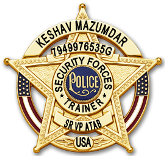Target analysis is an examination of potential targets to determine military importance, priority of attack, and weapons required to obtain a desired level of damage or casualties.[1] The Central Intelligence Agency defines it as, "network analysis techniques and specialized analytical tools to identify and detail key figures and organizations who may pose a threat to US interests."[2]

U.S. Air Force target analysis chart
Roles of target analysts[edit]
The most recognizable targeting analyst position in the Intelligence Community lies within the Central Intelligence Agency (CIA) within the Directorate of Intelligence (DI). The CIA identifies its Target Analyst position as one that analysts will “research, analyze, write, and brief using network analysis techniques and specialized tools to identify and detail key threats to the US. Targeting analysts regularly produce a range of current and longer-term intelligence products and provide analytic support to operations for key foreign and domestic policymakers, military officials, and intelligence and law enforcement agencies. Available targeting analyst positions focus on regions of the world and on functional topics including terrorism, weapons proliferation, narcotics trafficking, money laundering, and cyber threats.”[3]
The U.S. Army's 35F position, or "Intelligence Analyst" provides most of the targeting analysis for the military.[4] However, the Department of Defense also hires defense contractors to aid in targeting analysis, specifically during wartime.
Contractors[edit]
Target analysis contractors are hired by the U.S. government to fill temporary positions that it may be too inconvenient or costly to fill using current the intelligence community's resources.[5] Some employees of such contractors are occasionally hired directly by a government intelligence agency to work directly for them if their work is well respected and a longer term need in that particular field is observed.
In a job posting by Science Application International Corporation (SAIC), they specify the role of the target analyst will, “serve as a team member in the C4 Systems and Networking Division at the Office of Naval Intelligence (ONI) in Suitland, Maryland. The analyst will conduct maritime C4 target intelligence analysis and reporting. Duties may include: researching, collating, reviewing, evaluating, and integrating data from multiple sources to develop intelligence and enter it into a database on a set schedule. Prepare analytical reports, briefs, databases, studies, advisories, estimates, and evaluations. Identify information gaps and develop collection requirements, analytical tools, and methodologies to fill these gaps. Topics include maritime C4ISR infrastructure.”[6]
Other contractors that offer target analysis positions include Lockheed Martin, and Northrop Grumman.
Goal of target analysis[edit]
Tactical[edit]
Using a combination HUMINT, SIGINT, MASINT, IMINT, and OSINT,[7] analysts are able to identify immediate targets, such as terrorists or other military targets. This intelligence would then be passed on to the armed forces to take appropriate actions against. Many times targeting analysts working on tactical issues work in warzones either as contractors or military servicemen. Currently the focus of U.S. targeting analysts is identifying terrorists in and around Afghanistan.
Strategic[edit]
Like tactical analysis, target analysts combine all of the Intelligence "Ints" in order to provide decision makers with a long term forecast on arising issues and possible concerns. These area of concerns may consist of domestic or international terrorism, foreign conflicts, cyber crime, or many others. This type of analysis is done using structured and other advanced analytical techniques.
CARVER+Shock Vulnerability Assessment Tool A Six Step Approach to Conducting Security Vulnerability Assessments on Critical Infrastructure This excerpt contains: Table of Contents List of Illustrations Author’s Introduction Author profiles Additional Security Book available from Government Training Inc. Table of Contents 1 Introduction and History of CARVER CARVER as an Offensive Targeting Tool used by US Special Forces Historical use of CARVER+Shock 2 Step One - Conducting Risk-based analysis Risk Management and Sun Tzu Know Yourself Know Your Enemy Know Your Environment Fundamentals of Risk Management Risk based decision making model 3 Step Two - Know Yourself, Conducting the System Characterization Breaking large systems into small pieces Examples of System Characterization Agriculture Energy: Schools: 4 Step Three: Know Your Enemy, Conducting an All Perils Assessment What is a Threat Developing the Threat Assessment c Determining Probability Design Basis Threat What is a Hazard 5 Step Four - Know Your Environment Conducting a Security Assessment Assessment Execution ONSITE SURVEY 6 Step Five - CARVER+Shock Criticality, Accessibility, Recuperability, Vulnerability, Effect, Recognizability, Shock (1) Planning Developing Definitions and Scoring Parameters Conducting the Assessment c Examples (1) Energy (2) Agriculture (3) Transportation (4) Buildings and Soft Targets 7 Step Six - Mitigating the Risk Analyzing the results Conducting Root Cause Analysis for Vulnerabilities Appendices Appendix 1 Appendix 2 Appendix 3 Glossary List of diagrams and charts CARVER Matrix – Target Analysis 8 CARVER Matrix – Defensive Analysis 9 Risk-based analysis 14 Calculating Risk 19 Risk-based decision making tool 25 Identifying critical nodes chart 27 Target systems chart 29 Systems characterization chart 35 Developing the threat assessment chart 43 Determining probability chart 47 Threat profile chart 47 All perils list chart 50 Security assessment worksheet 55 Criticality assessment worksheet 63 Accessibility scale worksheet 64 Recuperability scale worksheet 65 Vulnerability scale worksheet67 Effects rating scale worksheet 68 Recognizability scale worksheet 69 Assessment spreadsheet 74 Target description spreadsheet 75 Calculation of final values spreadsheet 76 Examples – Energy 77 Examples – Agriculture 78 Examples – Transportation 79 Examples – Buildings and soft targets 80 Examples – office buildings 81 Mitigating the risk – analysis spreadsheet 82 Security vulnerability assessment questionnaire 89 Threat analysis questionnaire101 Environmental analysis questionnaire 1
TARGET REDUCTION
INT SUPPORT TO TARGETING
TARGET FOLDERS
TARGET NOMINATION
KINETIC
NON KINETIC
HVT/HPT
https://en.wikipedia.org/wiki/Reconnaissance#Overview
https://en.wikipedia.org/wiki/Surveillance

















































































